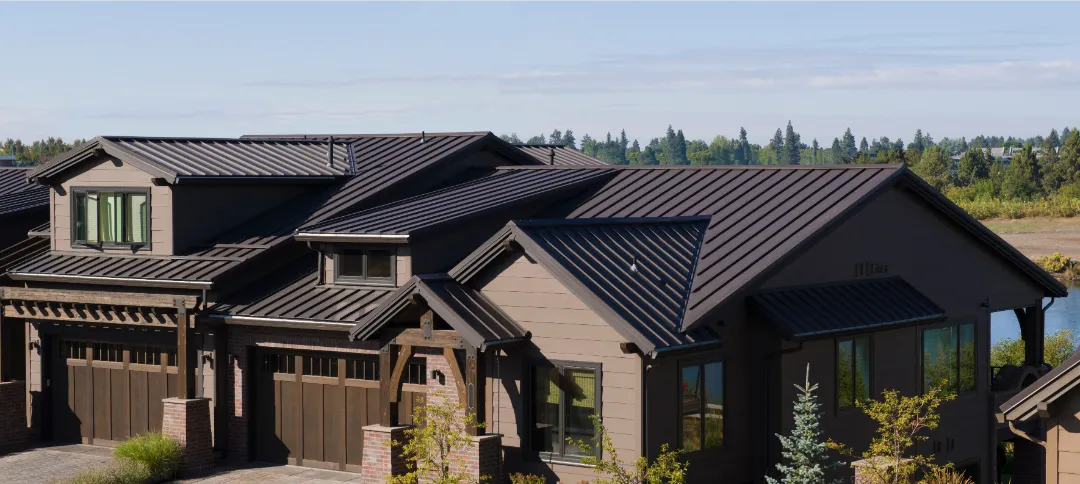ZEPHYRHILLS ROOFING BLOG
Take A Deep Dive Into Our Roofing Topics

Behind the Shingles: Exploring Different Roofing Materials and Their Benefits
By chance, have you ever stopped to consider the many options available when it comes to roofing materials? We're all familiar with the humble asphalt shingles, but did you know that there is a wide range of materials out there, each with its own unique benefits? In this discussion, we'll take a closer look at some of these options, including metal roofs, clay tiles, wood shakes, and synthetic roofing materials. So, whether you're in the market for a new roof or simply curious about the possibilities, prepare to be intrigued by the diverse world that lies behind the shingles.
Asphalt Shingles
Asphalt shingles, being one of the most popular roofing materials, offer numerous benefits for homeowners. One of the main advantages of asphalt shingles is their affordability. They are relatively inexpensive compared to other roofing options, making them a cost-effective choice for many homeowners. Additionally, asphalt shingles are available in a wide range of colors and styles, allowing homeowners to choose a look that complements their home's aesthetic.
Another advantage of asphalt shingles is their durability. When properly installed and maintained, they can last for 20 to 30 years. However, it is important to note that extreme weather conditions, such as hail or strong winds, can damage asphalt shingles, leading to the need for repairs or replacement.
In terms of maintenance requirements, asphalt shingles are relatively low-maintenance. Regular inspection and cleaning can help identify and prevent any potential issues. It is recommended to remove any debris, such as leaves or branches, from the roof to prevent moisture buildup and potential damage.
Despite their numerous advantages, asphalt shingles do have some disadvantages. One drawback is that they are not as environmentally friendly as other roofing materials, as they are made from petroleum-based products. Additionally, they may not be as resistant to fire as some other options, such as metal or tile roofs.
Metal Roofs
Metal roofs offer a range of benefits for homeowners, making them a popular choice in the roofing industry. One of the key advantages of metal roofs is their longevity and durability. Unlike other roofing materials, metal roofs can withstand harsh weather conditions, including heavy rain, snow, and strong winds. This durability means that homeowners can expect their metal roofs to last for decades, saving them the hassle and cost of frequent repairs or replacements.
Additionally, metal roofs are highly energy efficient, which can lead to significant cost savings for homeowners. Metal roofs reflect a large portion of the sun's heat, keeping the interior of the house cooler during hot summer months. This reduces the need for air conditioning and can result in lower energy bills. Furthermore, metal roofs have excellent insulation properties, helping to maintain a comfortable temperature inside the house during colder seasons and reducing heating costs.
In terms of cost savings, metal roofs can also be advantageous in the long run. While the initial installation cost may be higher compared to other roofing materials, the longevity and durability of metal roofs can offset this expense over time. With minimal maintenance required, homeowners can save money on repairs and replacements in the future.
Clay Tiles
While we have explored the benefits of metal roofs, let's now shift our focus to clay tiles. Clay tiles have been used for centuries and are known for their durability and aesthetic appeal. One of the major advantages of clay tiles is their ability to withstand extreme weather conditions, including high winds, heavy rain, and even fire. They are also highly resistant to rot, insects, and mold, making them an excellent choice for homeowners looking for a long-lasting roofing solution.
However, it is important to consider the cons of clay tiles as well. One of the main drawbacks is their weight. Clay tiles are significantly heavier than other roofing materials, which means that the structure of the roof may need to be reinforced to support the additional load. Additionally, clay tiles can be more expensive compared to other roofing materials, both in terms of installation and maintenance costs.
To maintain clay tiles properly, regular inspections are essential. Look out for any cracked or damaged tiles and replace them promptly to prevent water leaks. It is also important to keep the gutters clean to avoid any blockages that could lead to water pooling on the roof. Regular cleaning of the tiles can help maintain their appearance and prevent the growth of moss or algae.
Wood Shakes
Wood shakes are a popular roofing material known for their natural beauty and rustic charm. When considering wood shakes for your roof, it is important to weigh the pros and cons of this option. One of the biggest advantages of wood shakes is their aesthetic appeal. They provide a warm and inviting look to any home, giving it a unique and timeless charm. Additionally, wood shakes are also known for their durability. With proper maintenance and care, they can last for many years. However, there are also some drawbacks to using wood shakes. One major concern is their susceptibility to fire. Wood shakes are highly flammable, which can pose a risk in areas prone to wildfires. Another disadvantage is the installation process. Installing wood shakes is more complex and time-consuming compared to other roofing materials. It requires skilled professionals to properly install and maintain them. Overall, wood shakes offer a beautiful and durable roofing option, but it is important to carefully consider the pros and cons before making a decision.
Synthetic Roofing Materials
Moving on to another roofing material option, synthetic roofing materials provide a durable and low-maintenance alternative to wood shakes. One of the key advantages of synthetic roofing materials is their cost effectiveness. Compared to other roofing materials like wood shakes or slate, synthetic materials are more affordable to purchase and install. This makes them a popular choice for homeowners on a budget or those looking to save money on their roofing project.
In addition to being cost effective, synthetic roofing materials also have a positive environmental impact. Many synthetic materials are made from recycled materials, such as plastic or rubber, which reduces waste and helps to conserve natural resources. Furthermore, synthetic materials are often more energy efficient, as they can reflect sunlight and reduce heat transfer into the home. This can lead to lower energy bills and a reduced carbon footprint.
It's worth noting that synthetic roofing materials also offer excellent durability and weather resistance. They can withstand extreme weather conditions, including strong winds, heavy rain, and even hail. Additionally, synthetic materials are resistant to rot, mold, and insect damage, making them a long-lasting and low-maintenance option for homeowners.
Conclusion
In conclusion, exploring different roofing materials has shown us the benefits of each option. Asphalt shingles are affordable and easy to install, while metal roofs offer durability and energy efficiency. Clay tiles provide a classic and elegant look, while wood shakes have a natural and rustic charm. Synthetic roofing materials offer versatility and low maintenance. With so many options available, homeowners can choose the roofing material that best suits their needs and preferences.
Connect With Us
© Copyright 2025 Zephyrhills Roofing. All Rights Reserved.
Terms & Conditions | Privacy Policy

